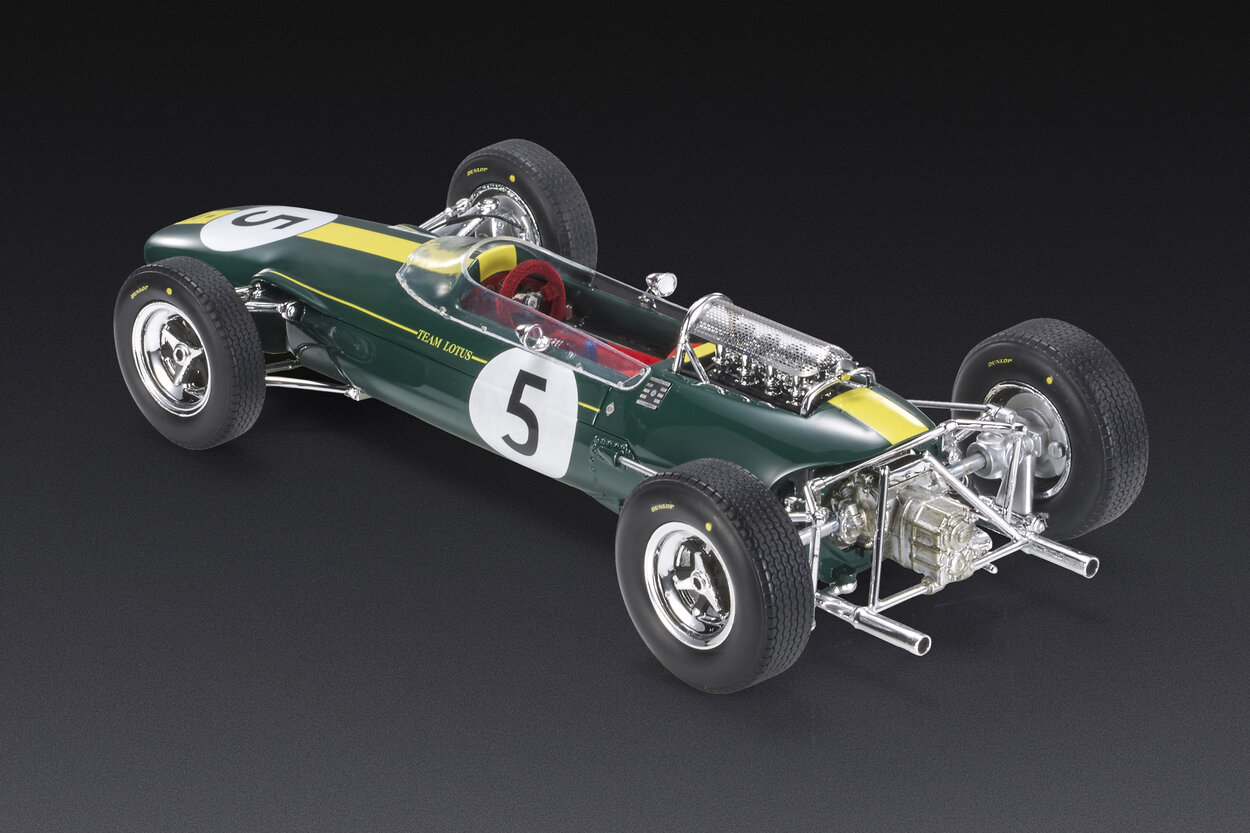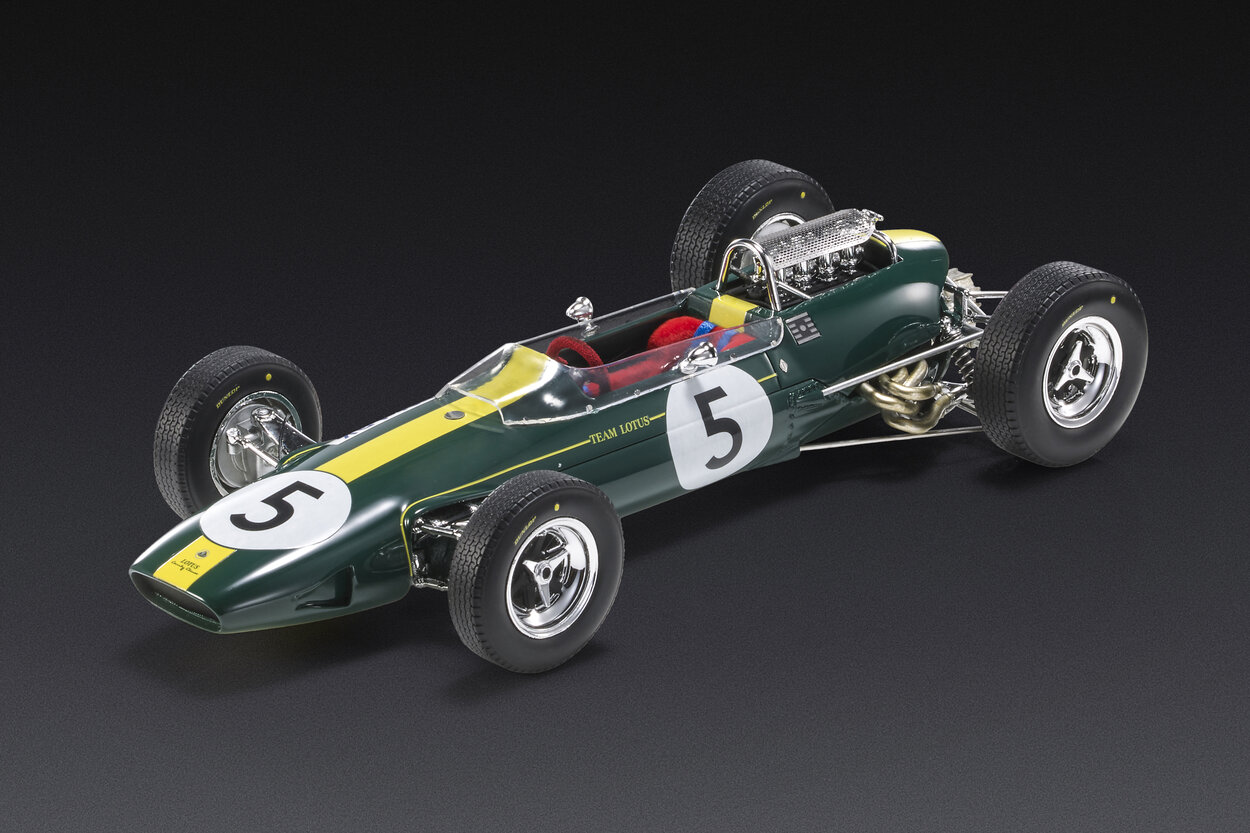Lotus 33
t is one of the most successful cars ever born from the extraordinary creative vein of Colin Chapman. With the model 33, the Scottish driver Jim Clark secures his second World Drivers’ Championship title in 1965, and Lotus claims its second Constructors’ Championship title.
Chapman builds upon the previous car, the Lotus 25, with which he introduced the concept of the monocoque chassis to Formula 1 two years earlier, enhancing the car’s rigidity, durability, and reducing its weight. The 33 encompass all these improvements and more: it’s stiffer, less complex, and even lighter. The bodywork closely resembles that of the 25. The engine remains the same 1.5-liter 8-cylinder Climax unit. However, there are differences in the suspension, and the tires are larger.

Drivers:
Jim Clark: Jim Clark’s 1965 season is nothing short of spectacular. The Scotsman wins, dominating the first six races he participates in: at East London, Spa, Clermont-Ferrand (with the model 25), Silverstone, Zandvoort, and Nürburgring. It’s precisely at the end of a German Grand Prix that he led from start to finish, starting from pole position and also setting the fastest race lap, that Jim clinches his second world championship title. It’s Sunday, August 1, 1965. There are still three races left in the season.
Mike Spence: It’s not easy being Jim Clark’s teammate. 1965 marks Spence’s first full season in Formula 1. The Englishman scores points at Kyalami and Silverstone and finishes on the podium in third place at the Mexican Grand Prix, which concludes the season. He achieves his best results in non-championship races. In the spring, he wins the Race of Champions at Brands Hatch and finishes third at the International Trophy at Silverstone.
Our model cars:

The Lotus 33 is used over four seasons. It debuts in a non-championship race at Aintree near Liverpool in April 1964. The car still requires some development work, and its entry into the World Championship is postponed until the early August German Grand Prix. Further development continues throughout the remaining races of the season, during which the 33 appears far from invincible.
The situation changes dramatically the following season when the 33 becomes unbeatable. In 1966, its performance fluctuates. It concludes its career with the 1967 Monaco Grand Prix – Clark retires, and Graham Hill finishes second. In total, the Lotus 33 competes in 27 races, winning 5, achieving eight podiums, ten pole positions, and setting eight fastest laps during races.

